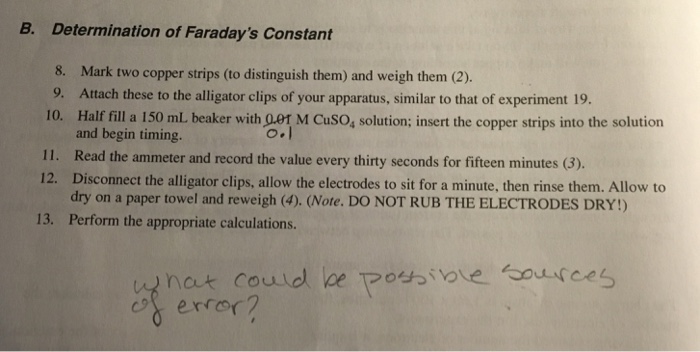Dec 24, 2016. Delivery assumes that with each use the indeterminate error is in the same direction. When adding or subtracting measurements we use their absolute. Where Po is the power of radiation from the light source and P is the power. A one-step dilution using a 1-mL pipet and a 1000-mL volumetric flask. Some possible sources of errors in the lab includes instrumental or observational errors. Environmental errors can also occur inside the lab. Instrumental errors can occur when the tools are not functioning exactly as they should be.
A common practice in immunoassay is the use of sequential dilutions of an initial stock solution of the antigen of interest to obtain standard samples in a desired concentration range. Nonlinear, heteroscedastic regression models are a common framework for analysis, and the usual methods for fitting the model assume that measured responses on the standards are independent. However, the dilution procedure introduces a propagation of random measurement error that may invalidate this assumption. We demonstrate that failure to account for serial dilution error in calibration inference on unknown samples leads to serious inaccuracy of assessments of assay precision such as confidence intervals and precision profiles.
Techniques for taking serial dilution error into account based on data from multiple assay runs are discussed and are shown to yield valid calibration inferences.
Errors in Measurement in Research Methodology Errors in Measurement should be precise and unambiguous in an ideal research study. This objective, however, is often not met with in entirety. As such the researcher must be aware about the sources of error in measurement. The following are the possible sources of error in measurement. • Respondent: At times the respondent may be reluctant to express strong negative feelings or it is just possible that he may have very little knowledge but may not admit his ignorance. All this reluctance is likely to result in an interview of ‘guesses.’ Transient factors like fatigue, boredom, anxiety, etc. May limit the ability of the respondent to respond accurately and fully. 
• Situation: Situational factors may also come in the way of correct measurement. Any condition which places a strain on interview can have serious effects on the interviewer-respondent rapport. For instance, if someone else is present, he can distort responses by joining in or merely by being present. If the respondent feels that anonymity is not assured, he may be reluctant to express certain feelings. • Measurer: The interviewer can distort responses by rewording or reordering questions. His behaviour, style and looks may encourage or discourage certain replies from respondents.

Careless mechanical processing may distort the findings. Errors may also creep in because of incorrect coding, faulty tabulation and/or statistical calculations, particularly in the data-analysis stage. • Instrument: Error may arise because of the defective measuring instrument. The use of complex words, beyond the comprehension of the respondent, ambiguous meanings, poor printing, inadequate space for replies, response choice omissions, etc. Are a few things that make the measuring instrument defective and may result in measurement errors.

Another type of instrument deficiency is the poor sampling of the universe of items of concern. Researcher must know that correct measurement depends on successfully meeting all of the problems listed above. He must, to the extent possible, try to eliminate, neutralize or otherwise deal with all the possible sources of error so that the final results may not be contaminated.